Results 10,241 to 10,250 of 12096
Thread: Anandtech News
-
01-13-20, 04:40 PM #10241
Anandtech: TRX80 and WRX80 Don’t Exist: Neither Does the ‘Intel LGA1159’ Socket
For anyone that isn’t following the minutiae of desktop computing, one of the more prominent rumors in AMD land is the presence of upcoming sockets called TRX80 and WRX80. These parts, assumed to be aimed at ‘casual’ and ‘workstation’ users, have formed the basis of many rumors and a lot of speculation, especially on the back of TRX40 which does exist for the latest generation of AMD Threadripper CPUs. Similarly, recent news has been posted about the potential existence of a theoretical LGA1159 socket for Intel, despite the fact that LGA1200 is often cited as the next generation socket for upcoming Comet Lake processors on the desktop. We reached out to a few contacts while we were here at CES to put some weight into these rumors, to confirm them one way or the other, for good.
It’s at this point I want to talk about sources. For anyone who has studied journalism, or even history at a high school level, there is the concept of sources carrying different amounts of weight. A primary source, for example, would be a direct participant in an event who would be able to recount with specific detail what they did/saw or what is planned. A secondary source might be a journalist collating or analyzing data from primary sources, a piece of software including a list of details about other products, or an artist depicting the events taking place from information they have collected. Tertiary sources go beyond this, and might involve individuals discussing an event without any direct experience of a specific instance. When it comes to the journalism that the tech press practices, depending on the publication, different numbers and different levels of sources form the minimum requirements for each publication. This acts as the minimum barrier required in order to present the information to its readers.
Here at AnandTech, we often use at least two sources for any particular story, preferably both primary sources. If the second source is trusted, for example a fellow media peer in the industry that has a history of accuraccy and one that we trust, they can be treated similarly to a primary source, albeit technically a secondary source (we often try to find a separate primary source different to the one they have used). Sometimes we have a lower standard for entry for the sake of humor, such as our report into Intel’s mythical Core i9-9900KFC, which never saw the light of day but I enjoyed writing it in a very tongue-in-cheek style (and I hope that came across). So to put this in to context, if I write something based on primary sources, I nominally act as a second source for others that cite my work.
Back to this specific matter, I had noticed that any mention of TRX80, WRX80, or LGA1159, was written about by journalists with no primary sources about any of it. So in order to find out when these two AMD eight-channel chipsets were going to come out, as well as the existence of yet another consumer Intel socket, I naturally went to ask AMD, Intel, as well as their primary partners and OEMs. The partners and OEMs that work with Intel and AMD are involved in developing and selling future platforms, and as such they have insight into the next 6-9 months of products coming into the market. They also have ideas about the 9-18 month schedule, but as we’ve seen in the past, that is often subject to change. Obviously none of the companies we spoke to were prepared to speak about future products, such as their own LGA1200 motherboards, however that doesn’t apply here.
All of our primary sources in this regard had very puzzled looks on their faces when I mentioned either the TRX80, WRX80, or LGA1159. One of them looked at me in amazement, and specifically said ‘what are you on about?’. I explained the situation, with ‘the internet’ talking about new 8-channel consumer motherboards, or an updated socket for Intel’s Comet Lake and beyond. The answer I got was very clear cut from everyone I talked to: no-where on their roadmaps has it ever said TRX80, WRX80, or LGA1159. None of the companies I talked had even heard of these names, let alone had any products with these features in the pipeline.
On the LGA1159 socket, one source actually knew what I was talking about, at least to some degree. They stated that the reason why people are confused here is that Intel distributed some early engineering samples of six-core Comet Lake CPUs in LGA1150 packaging, and those photographs got leaked onto the internet. The reason Intel could do this is that there's next to no difference between Coffee Lake Refresh and Comet Lake silicon, and as a result some early testing could be done. However, the same source also showed us the different packaging for the 10-core engineering sample, where the layout is somewhat different. As it stands, this is the issue with assuming what you see is always going to be at retail - if the fact that something is an engineering sample isn't taken into account, perhaps you shouldn't write about every rumor you see or hear.
But does this mean that there will never be a product called TRX80, WRX80, or have the LGA1159 socket? No. But what I am told from my sources is that as it stands these products have never existed. There might be a future LGA1159 socket for Intel CPUs, or future upgraded motherboards for AMD CPUs, but as it stands, all of my contacts confirmed that none of them exist on roadmaps today.
It should be pointed out that our sources did request anonymity. This is par for the course for this sort of response, even when confirming when a particular ‘product’ doesn’t exist. Should these sources be able to provide information about actual future products, and I may wish to call upon them again, and they'd rather not act as a magnet for future questions from all the other tech media.
More...
-
01-14-20, 02:36 PM #10242
Anandtech: CES 2020: be quiet! Unveils New Pure Rock 2 CPU Cooler For Entry Level
Adding to its extensive selection of CPU air coolers, be quiet! has announced its latest entry-level model, the Pure Rock 2. Building on the success of the original Pure Rock cooler, the be quiet! Pure Rock 2 keeps it simple with support for up to 150 W TDP processors, and comes with an included Pure Wings 2 120 mm PWM fan.
The be quiet! Pure Rock 2 has four 6 mm heat pipes with a direct contact baseplate design for better cooling performance. Targetted entry-level users, the Pure Rock 2 boasts the same 150 W TDP cooling performance as the previous Pure Rock model. To aid memory compatibility, the Pure Rock 2 cooler uses an asymmetrical design.
It comes in two versions including a standard silver, or in black which looks good with its anodised coating. Supplied with the be quiet! Pure Rock 2 is a single Pure Wings 2 120mm PWM cooling fan, with fan retention clips for two fans included in the accessories.
The be quiet! Pure Rock 2 is set to launch in April with an MSRP of around $40 for the silver model, and $44 for the black model.
Gallery: be quiet! Pure Rock 2 Gallery




More...
-
01-14-20, 02:36 PM #10243
Anandtech: CES 2020: Clevo & XMG Prepare Notebooks w/ 12-Core AMD Ryzen 9 3000 CPUs
AMD attracted a lot of attention at CES 2020 with its launch of the Ryzen 4000-series Mobile APUs with up to eight cores in a 15W TDP form factor. The processors enable AMD to compete for all segments of the notebooks market, from ultra-portables to high-end gaming machines for the first time in years. But when it comes to gaming, there are people who always want more and for them Clevo and its partner XMG are preparing a desktop replacement laptop with an AMD Ryzen 3000-series processor featuring up to 12 cores.
Clevo is a leading producer of higher-end notebook platforms which are used by some well-known PC suppliers, such as Eurocom. For obvious reasons, virtually all gaming platforms by Clevo released in the recent years relied on Intel’s processors for high-end laptops or even desktops (albeit with TDP-down feature). By contrast, AMD's Ryzen 3000-series desktop processors have something that Intel cannot offer just yet, up to x86 12 cores, which is why Clevo has developed its NH57ADS notebook platform powered by desktop processors, according to Jarrod’s Tech.
XMG, a supplier of gaming laptops from Germany, will be one of Clevo’s first customers to use the NH57ADS platform for its codenamed XMG Apex 15 gaming laptop aimed at those who want a no-compromise performance in a clamshell form-factor. The notebook is based on up to AMD’s 12-core Ryzen 9 3900-series processor with an up to 65 W TDP that is paired with NVIDIA’s GeForce GTX/RTX graphics with a TDP of up to 115 W. Note that XMG here is using AMD's special option to lower the TDP of its desktop CPUs down a class, to help reduce thermals at the expense of performance. To cool down the CPU and the GPU, Clevo uses a rather formidable cooling system with two blowers and six heat pipes. XMG reportedly plans to offer its own settings for the cooler and a BIOS that supports overclocking.
Since the NH57ADS platform and the codenamed XMG Apex 15 machine are designed to replace desktops, they feature a modular design and therefore can be upgraded, assuming that AMD will offer more high-end processors in its AM4 form-factor with a 65 W TDP and there will be an appropriate BIOS update for the NH57ADS. The system itself can be equipped with up to 64 GB of DDR4 memory, two M.2-2280 SSDs (one PCIe, one SATA), and a 2.5-inch storage device. As for connectivity, everything is pretty regular: Wi-Fi 6, Bluetooth, GbE, USB-A, USB-C, HDMI, a microSD, and audio connectors.
The 15.6-inch Clevo NH57ADS is 3.25 cm thick and weighs 2.7 kilograms, which is not too heavy, but not too portable either. Maxed out configurations of the machine will also come with a 230 W external power supply, which will further increase weight.
Clevo does not pre-announce products for its clients, so it is hard to say which suppliers will eventually offer the NH57ADS platform and when. Evidently, notebooks like the XMG Apex 15 are going to be expensive, which is natural for DTRs.
For the sake of truth, it is necessary to note that Clevo’s NH57ADS is not the first DTR notebook to feature a desktop AMD Ryzen processor. ASUS introduced its ROG Strix GL702ZC with an eight-core AMD Ryzen 7 1700 back in late 2017, but that was a 17.3-inch machine.
Related Reading:
- AMD Ryzen 4000 Mobile APUs: 7nm, 8-core on both 15W and 45W, Coming Q1
- CES 2020: Dell’s G5 15 SE Gaming Laptop Gets 8-Core Ryzen 4000 & Radeon RX 5600M dGPU
- ASUS Launches ROG Strix GL702ZC: 17.3-inch, Eight-Core AMD Ryzen 7, Radeon RX580
- AMD’s 64-Core Threadripper 3990X, only $3990! Coming February 7th
- AMD at CES 2020: Q&A with Dr. Lisa Su
- An Interview with AMD’s CTO Mark Papermaster: ‘There’s More Room At The Top
Source: Jarrod’s Tech/YouTube
More...
-
01-14-20, 05:46 PM #10244
Anandtech: Want a $50k Mac Pro Cheese Grater? Get a $60 PC Cheese Grater!
One of the more bemusing aspects of 2019 was the launch of the new Mac Pro. Powered by Intel’s Xeon W CPUs, it offered a range of options such that the most buoyant of budgets could splash out on a fully equipped $50k+ system from the fruit company. The chassis was a doozy: nicknamed the cheese grater, because it had a holey and angled design such that you could grate cheese on it. Some reviewers even did that in there reviews – no joke. The only problem with this case is that it is only available for Macs. Phanteks' gaming brand, Metallicgear, has the solution if you want it for PC, and it’s much cheaper.
This cheese grater is called the Metallicgear Neo Pro, and currently in the last stage of design before retailing later this year in March/April. The concept from Phanteks has, for lack of a better phrase, turned into a cheap knockoff, intentionally. Apple’s case is machined aluminum for that premium feel – this Neo Pro is by contrast a plastic design, hence its ability to be only $60.
The circular vents are different to the Apple design, and the feel of the material is definitely different. Not only this, but Phanteks is thinking on making a set of wheels for it – a steal at $395 (they’re not actually making wheels, that’s a joke). However at a distance, you would be none the wiser, for at least the first few seconds.
The chassis design fits an ATX motherboard, and the idea is to ship the black model first with two black fans. The side panel is tempered glass, and the power supply bay is covered compared to the rest of the design. The front IO panel is on the top of the case, with two USB ports and audio outputs. More details to come when Phanteks is ready to ship.
Part of me wants this case, just to build a more powerful system in it than the top-end Mac Pro. Either that, or fill it with more than $50k of hardware, just to see if it is possible.
Images provided by Phanteks - ours weren't that great.
Gallery: Want a $50k Mac Pro Cheese Grater? Get a $60 PC Cheese Grater!


More...
-
01-15-20, 08:06 AM #10245
Anandtech: The Velocifire VM02WS Wireless Mechanical Keyboard Review: Scratching the
Following our earlier look at the premium Corsair’s K63 Wireless keyboard, it is only reasonable to check what's available at the other end of the spectrum – especially since there is very little competition at all. So for today's review we are taking a look at Velocifire's VM02WS wireless mechanical keyboard, which is an entry-level keyboard with a competitive price tag.
The keyboard is designed to fit a specific niche of a professional typist who needs a wireless mechanical keyboard. But can the VM02WS exceed its niche and succeed in other popular roles such as couch gaming? Let's find out.
More...
-
01-15-20, 01:27 PM #10246
Anandtech: The Lian Li Strimer Plus, For When You Need an RGB 24-pin ATX Cable
During our tour of the Lian Li suite at CES 2020, we saw a variety of updated case designs, some impressive and others with minor tweaks. One of the more standout products at the suite was the new and improved Lian Li Strimer Plus RGB PSU cable. Updated for 2020, the Strimer Plus now has visual effects, better build quality, but with a slightly higher retail price.
Back at Computex 2018, our senior editor Dr Ian Cutress took a look at the first iteration of the Strimer, and he was dismayed at the name. Pronounced Streamer, but written as Strimer the Western and Eastern divide on PR is far between the intended result. Fast forward to CES 2019 and what was originally a limited product, has now transitioned into its second generation, the Strimer Plus. Whether users love or hate RGB, the Strimer Plus now supports RGB visual effects due to an included RGB controller box. This box includes four buttons and doesn't intrude when compared to controllers from companies such as Thermaltake; a smaller box means less overall space used.
In addition to the 24-pin ATX RGB Strimer Plus, Lian Li also intends to sell an 8-pin PCIe version so users can not only enhance the overall RGB experience but match it up with other devices. The Lian Li Strimer Plus is certified to work with other RGB ecosystems including ASUS ROG Aura Sync, MSI's Mystic Light, ASRock's Polychrome RGB, and GIGABYTE's RGB Fusion. It can be hooked up directly into a motherboard RGB header which gives each companies software the ability to control it, or users can run it independently from the included control box.
Ignoring the Strimer (pronounced Streamer) name which is simply lost in translation between the West and East, the Strimer Plus has a recommended retail price of $60 for the 24-pin cable and $40 for the PCIe kit. The expected time frame of when the Lian Li Strimer Plus will hit retail shelves is February.
Gallery: All of the RGB, Lian Li Strimer Plus, Same Sketchy Name, Upgraded Lighting





More...
-
01-15-20, 01:27 PM #10247
Anandtech: MSI Shows Off New White Creator Peripherals Range
During CES 2020 at the MSI booth, the company unveiled its latest range of peripherals for professionals. The MSI CK40 keyboard, the CM30 mouse, and CH40 wireless earbuds are designed with content creators and professionals in mind, with subtle white aesthetics and use Bluetooth to connect to desktop and notebooks wirelessly. At least, that's what it says in the description.
The MSI CK40 keyboard comes with a white aluminium frame, and allows users to connect wirelessly with through 2.4 G, via Bluetooth, or with the included cable. The CK40 uses quiet and low profile scissor switches which MSI says are designed with comfort in mind and should have the added benefit of a stain repellant coating.
The MSI CM30 mouse is similar in that it features an all-white design with MSI's Creator silver dragon in the center. The CM30 uses the popular Kailh silent switches which are rated at 5 million clicks and can connect to a system via 2.4 G, or Bluetooth. It features what MSI calls an ergonomic design which is described as being designed for constant use. The sensor of choice for the CM30 is the Pixart PMW3325 optical sensor.
The most interesting feature of the new MSI CH40 wireless earbuds is that it uses Bluetooth 5.0 to mirror the audio across two sets of CH40 earbuds simultaneously.
The MSI CK40 keyboard is set to release with an MSRP of $80, with the CM30 mouse expected to launch at $70. MSI's CH40 wireless earbuds are expected to retail for $80, with the full-range expected to launch sometime in Q1. One notable point across the CK40, CM30, and CH40 are that they all work with Windows 10, 8, 7, as well as Apples macOS and iOS.
Gallery: CES 2020: MSI Shows Off New White Creator Peripherals Range





More...
-
01-16-20, 03:31 AM #10248
Anandtech: Intel Cuts 2nd Gen 'Extended Memory' Xeon Scalable Prices
Today Intel will be officially starting product discontinuation of ‘M’ medium sized memory Xeon Scalable CPUs. Due to customer feedback and sales figures, Intel has deemed it in the best interests of the product stack to simplify: only two memory configurations (1.5TB and 4.5TB) will remain. Alongside this change comes a very rare price cut: the high memory configuration versions, the L CPUs, will be re-priced to match the old medium memory configuration pricing.
More...
-
01-16-20, 09:30 AM #10249
Anandtech: CES 2020: HP’s Spectre x360 15 Gets Comet Lake, Goes on Diet, Gains 17 Hrs
Notebook makers put a lot of efforts into making their 13.3 and 14-inch notebooks as sleek and light as possible, which is why road warriors can enjoy more compact systems every year. Meanwhile, technologies designed for the aforementioned PC are eventually used on other types of laptops too. This is the case with HP’s 2020 Spectre x360 15, which inherits many design elements of its 13.3-inch convertible sibling to make the 15.6-inch machine more compact.
The key improvement of the 2020 HP Spectre x360 15 over its predecessor are narrow display bezels that enabled the company to install a 15.6-inch Full-HD or Ultra-HD display panel into a chassis that resemble those of a 14-inch laptop. The notebook now boasts a 90% screen-to-body ratio (STBR), up from a 79.78% STBR in case of the 2019 model, and is 24 mm shorter than the predecessor. Meanwhile, the PC did not become any thinner, yet it is now clearly more compact than before.
Obviously, to make the Spectre x360 15 more compact in general, HP had to redesign its internals. The system is powered by Intel’s 10th Generation Core processor (Comet Lake) that is accompanied by an optional NVIDIA GeForce GPU, solid-state storage as well as everything else that you come to expect from a premium 2020 laptop, including Wi-Fi 6, Bluetooth, Thunderbolt 3, USB Type-A, HDMI, a microSD slot, Windows Hello-compliant webcam with IR sensors (which can be switched off), a microphone array, a Bang & Olufsen speaker array, and a 3.5-mm combo audio jack for headsets.
Just like last year, the flagship Spectre x360 15 will come with a 15.6-inch AMOLED display with TrueBlack HDR 400 certification that covers the DCI-P3 color gamut. Meanwhile, HP will also offer an optional 4K LCD panel that consumes 2 W for those who want a very long battery life of around 17 hours. Select machines will also come with an anti-reflection glass.
As usual with Spectre-branded notebooks, HP put a special emphasis on style of its new 15.6-inch mobile PC. The system will come in Nightfall Black with Copper Luxe Accents or Poseidon Blue with Pale Brass Accents chassis with gem-cut edges.
HP’s Spectre x360 15 will be available this March directly from HP starting at $1.599.99
Related Reading:
- HP’s 2019 Spectre 13 X360 Launched: Ice Lake, OLED, 22 Hours
- HP at CES 2019: HP Spectre x360 15 Gets AMOLED Display
- HP Launches Ultra-Thin HP Spectre 13 x360: Quad-Core i7, Gigabit LTE, 22.5 Hr Battery Life
- HP at CES 2018: HP Spectre x360 using Intel with Radeon RX Vega M, $1370
Source: HP
More...
-
01-16-20, 09:30 AM #10250
Anandtech: Intel’s Confusing Messaging: Is Comet Lake Better Than Ice Lake?
This year at CES 2020, Intel held its usual pre-keynote workshop for select members of the press. Around 75 of us across a couple of sessions were there to hear Intel’s latest messaging and announcements from the show: a mixture of messaging and preview of the announcements to be made at the keynote. This isn’t unusual – it gives the company a chance to lay down a marker of where it thinks its strengths are, where it thinks the market is heading, and perhaps gives us a highlight into what might be coming from the product hardware perspective. The key messages on Intel’s agenda this year were Project Athena, accelerated workloads, and Tiger Lake.
We’ve covered Tiger Lake in a previous article, as it shapes up to be the successor to Ice Lake later in the year. Intel’s Project Athena is also a known quantity, being a set of specifications that Intel wants laptop device manufacturers to follow in order to create what it sees as the vision of the future of computing. The new element to the discussion is actually something I’ve been pushing for a while: accelerated computing. With Intel now putting AVX-512 in its consumer processors, along with a stronger GPU and things like the Gaussian Neural Accelerator, actually identifying what uses these accelerators is quite hard, as there is no official list. Intel took the time to give us a number of examples.
More...
Thread Information
Users Browsing this Thread
There are currently 29 users browsing this thread. (0 members and 29 guests)




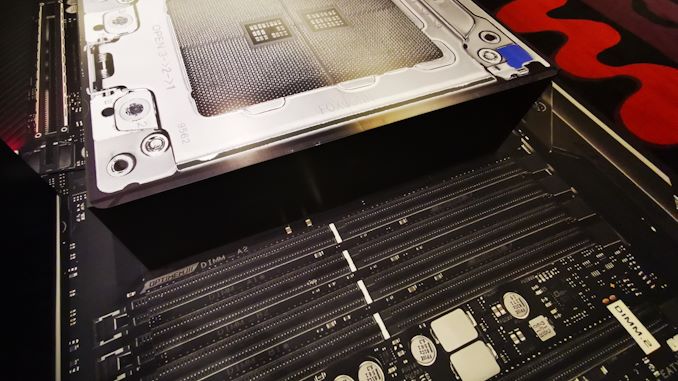

 Quote
Quote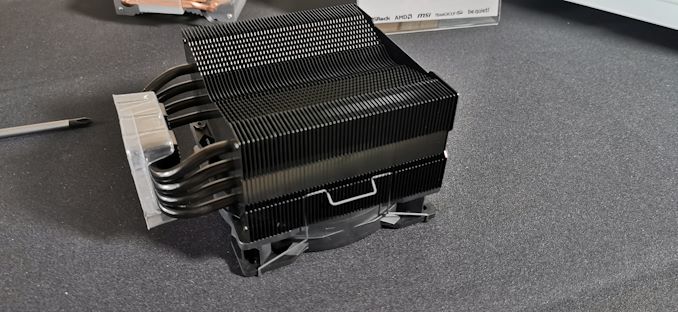


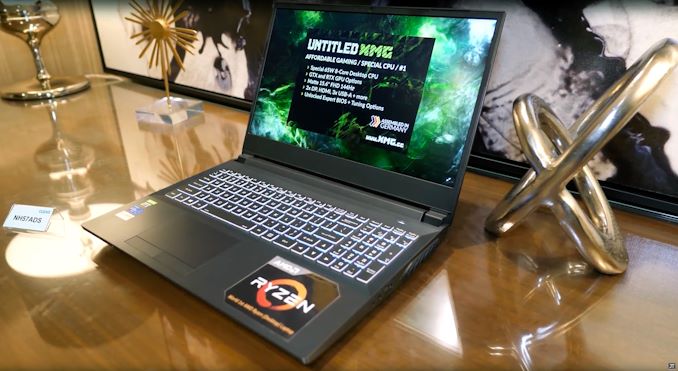
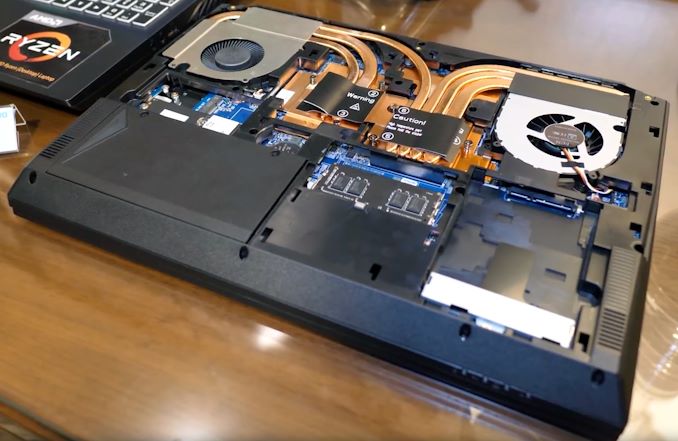
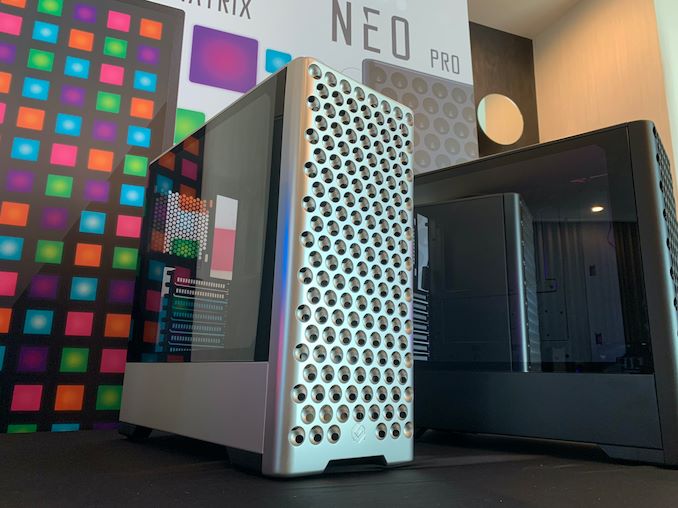
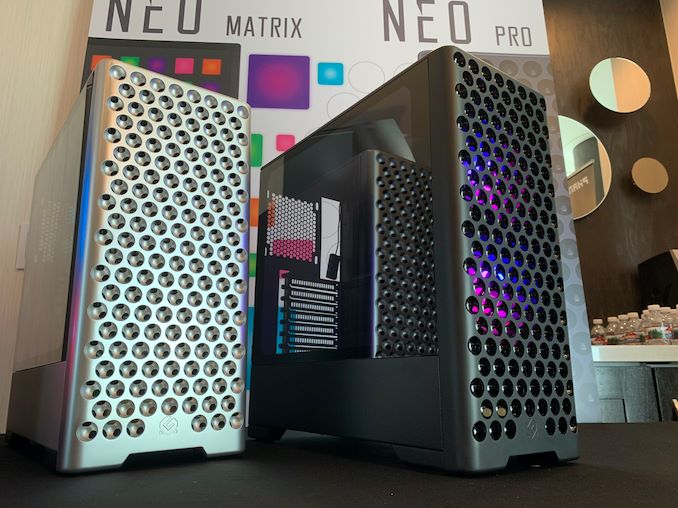
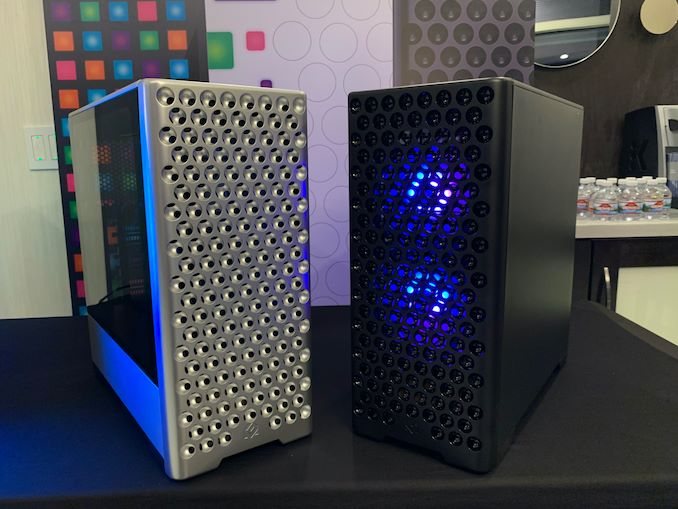
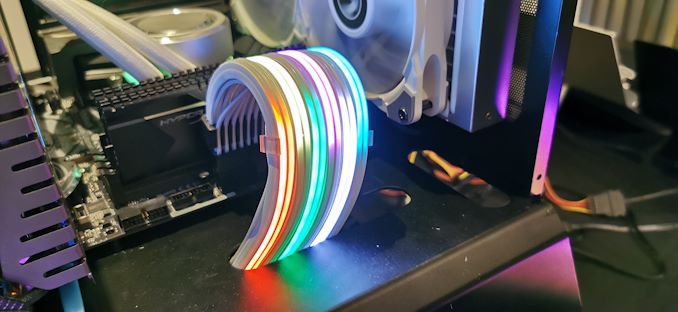

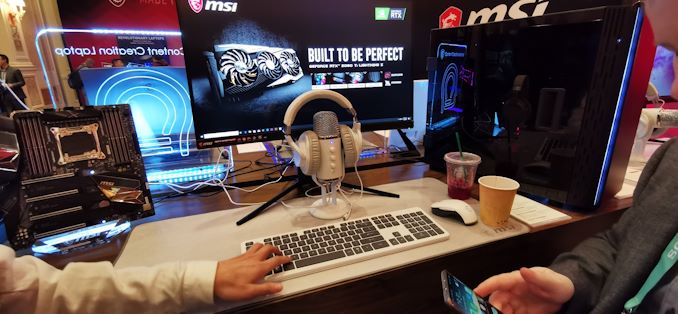

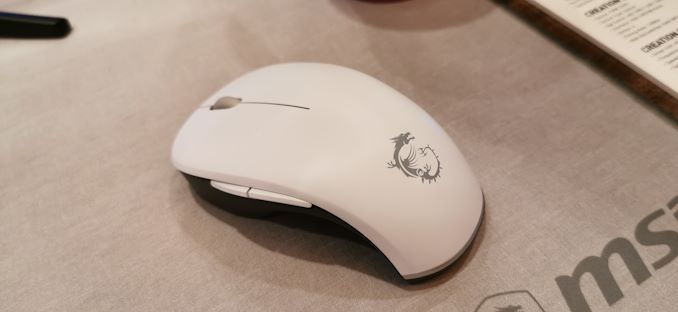

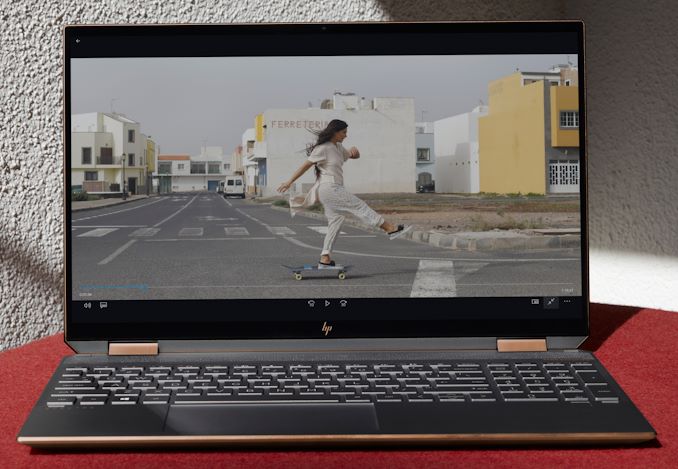
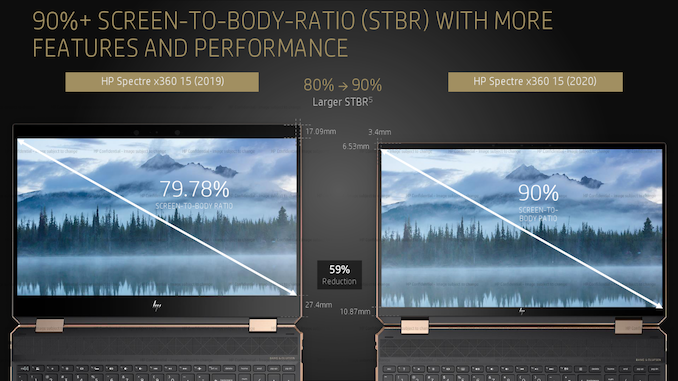






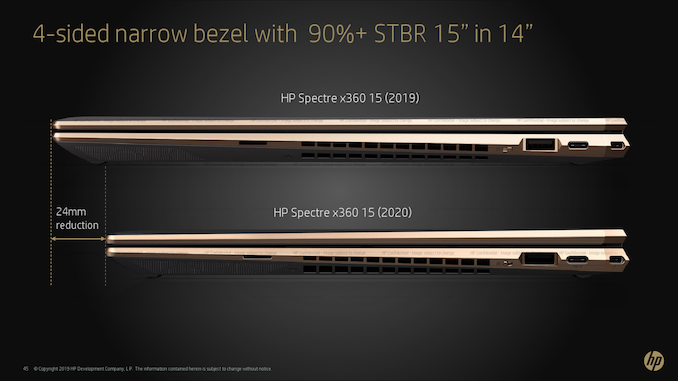
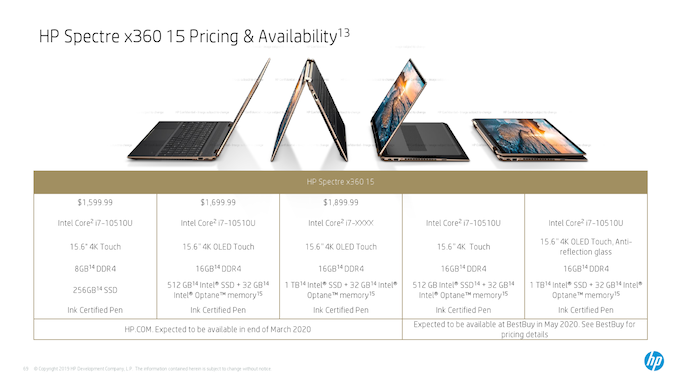
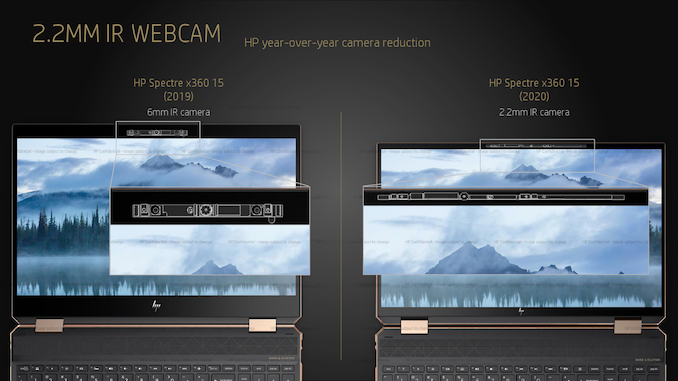
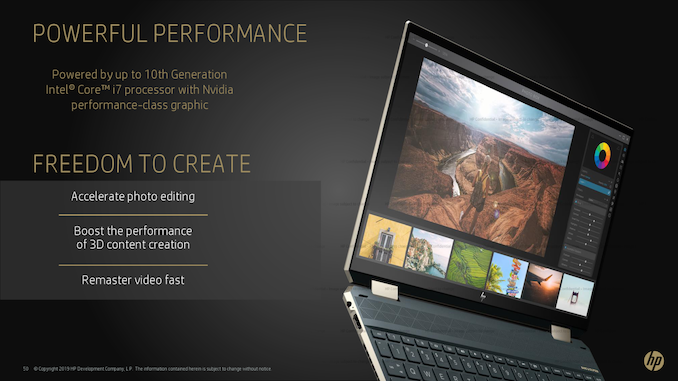

















Bookmarks